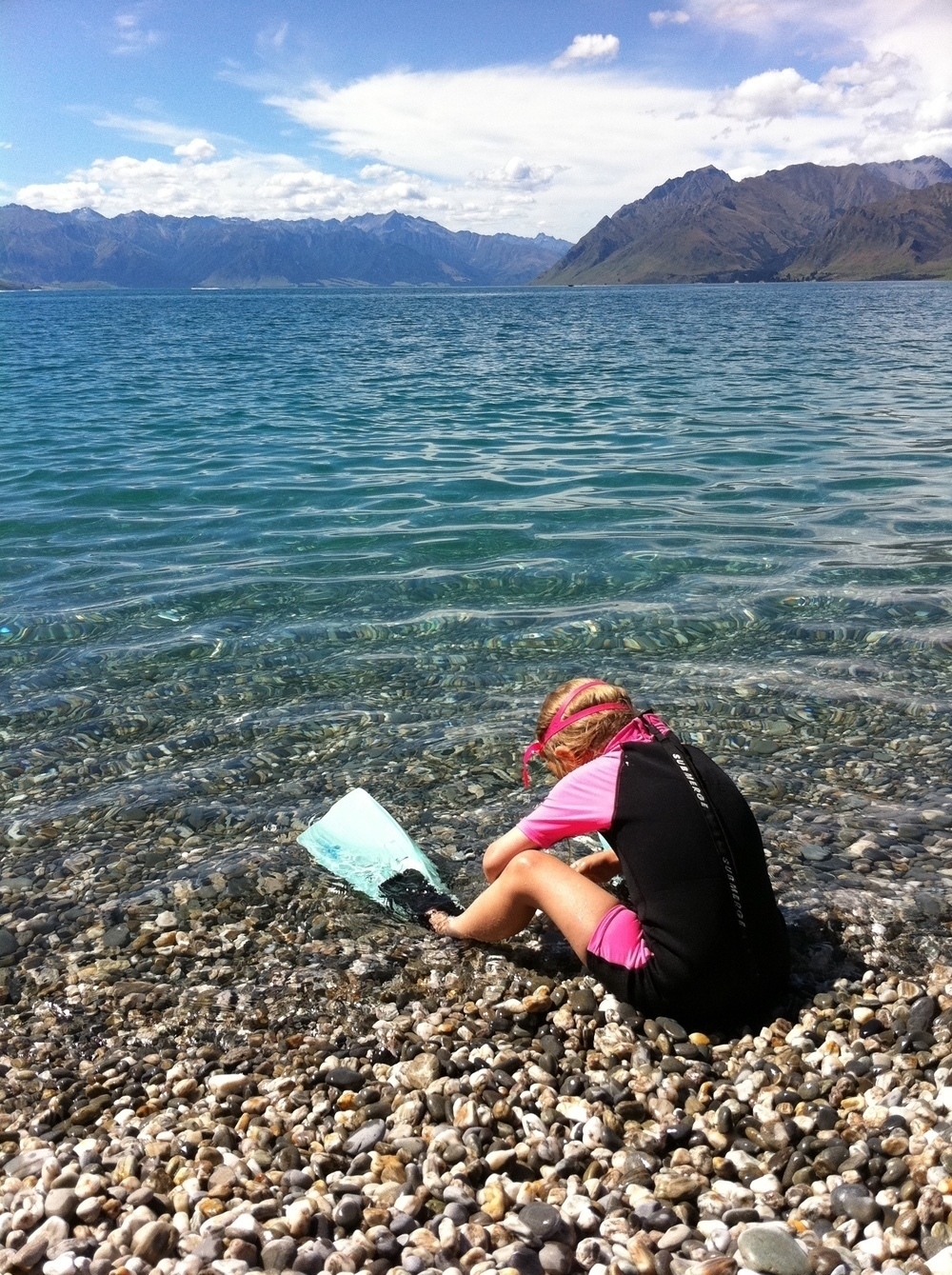After each Webstock I return with the idea that I should be doing something better; starting of course with writing up my experiences there. It doesn’t happen (with my passive phrasing right there pretty much symptomatic).
This year I won a free ticket, which was very nice indeed. I resolved that because of this I should really really make the effort this year to write it up. Unfortunately good intentions didn’t really result in an epic write-up for each talk. I got partway through this and gave up.
Scott Berkun
The Year Without Pants: WordPress.com & The Future of Work
First up was Scott Berkun. I had not heard of him before. He’s spent a year working for famous blog software company Wordpress, and was asking the question: what value does Management have when all the creative challenges belong to the workers?
Good question, if you are in a narrow range of jobs for which that applies. The answer sounded like: workers of the world unite! You have nothing to lose but your trousers!
You see, I get a feeling of dissonance about the whole pants-free thing. I don’t know about you, but when I think of pants I think of trousers and underpants. So pants-free working therefore implies some pretty horrific mental imagery when thinking about others taking up the practice, as well as a frisson of danger when applied to oneself (after all, laptops can get quite hot).
And sadly (as in, I am a very sad person) I haven’t quite yet put down my pitchfork after that time in 2005 when Matt Mullenweg stuffed the Wordpress site full of spam links for money. So I had a slightly unfair and cynical take on his talk. I started writing some random phrases down and they came out like a haiku:
Trousers optional
For privileged screen jockeys
Then blog ping chat skype
Well, I thought, that worked out quite good. I might do that again!
Josh Clark
Mind the Gap: Designing in the Space Between Devices
I should have heard of Josh Clark. I would have had I done any due diligence on the speakers. My bad: I’ve been busy. He seemed like a really nice chap though.
His issue was that our gadgets just don’t work together too well. Which is true; but the film of cynicism on my glasses had carried over from the last speaker and I couldn’t help feeling like this was a classic First World Problem.
It brings us sadness
Our gadgets don’t kōrero.
Bodge up with more tech!
A First World Problem that of course, people will make billions of dollars from.
Erika Hall
Beyond Measure
Aha! A speaker I had heard of - I knew that she is part of the same design firm as last year’s quite good speaker (but not really the star of the after-party) Mike Monteiro. Her talk was pretty cool: we have lots of data; we think it explains everything… but it doesn’t.
Meaning is tricky.
Stories have power. Data
Explains partially.
I was struck with the thought that we seem to have replaced our reliance on reductionist approaches to explaining the world with the opposite: a big-data statistical prediction of it. Neither tell human stories.
Aarron Walter
Connected UX
This chap came from MailChimp, which seems like another nice internet company. Carrying echoes of the other speakers he spoke of “designing for emotion”, and turning data into information into knowledge into wisdom. All good stuff.
Stories for business
Connect those points, cross those streams
Work your interns hard
Yeah, he lost me right when he mentioned his fantastic intern looking at 10,000 customer emails in a week, a performance that Got Him That Job! I wondered if he was a paid intern. I hoped so. And I hoped like hell that that unpaid intern cultural thing does not make it to New Zealand.
Dan Saffer
Designing with Details
At my current place of work we’re building an app, so I was pretty interested in what Dan had to say.
Little things matter
Imbue feeling, quality
Humanise your work
This was the most conventionally useful talk for me. I’m now waiting for his book to arrive.
Liza Kindred
The Future of Commerce
Shopping is awesome
The revolution will be
Live on Kickstarter
I was not a fan of this talk at all - but others seemed to get more out of it.
Nelly Ben Hayoun
Crafting the impossible
Ben Hayoun was an incredibly charming French person who seems to have blagged her way into the most amazing jobs. Once again, it’s clear that talent gets you part way there; but self-confidence and risk-taking will take you to the end.
Discover futures
Extreme experiences
Hammer ooh la la
I have this feeling that she’d make the most amazing star of a documentary. But given that she had instructed that no recording be made of her talk I am guessing that it probably won’t happen.
Jen Bekman
Stick around and fix it - there’s no video of this one either.
Made Art a habit.
Business blew up. Held through with
Doge and the Right Thing.
Persist and fix your mistakes. This was an interesting contrast to a later talk about the value of quitting.
Anne-Helen Petersen
What we talk about when we talk about Brangelina
Through celebrity
Ideologies battle.
Mindfully read it.
I really liked this talk despite the apparently frothy title. Now, when stuck in the doctor’s waiting room, you can parse that stack of Women’s Weeklys in front of you. It’s OK.
Peterson has been popping up everywhere lately, even at my favourite magazine, The Baffler. This is great.
Jessica Hagy
New Zealanders explain the Internet
“…fleas of deception…”
“…you were never just yourself…”
“…culture is about you…”
Charlie Todd
Causing a Scene
In public spaces
People will be creative
Let them have a crack
Andy Baio
The Indiepocalypse
Keep Portland weird, by
Staying independent. It’s
Easy when famous.
Yeah, yeah. We can all be sustainably living indie techno-hipsters. But it helps if you’ve been struck by the lightning of techno-fame already, I thought.
Tom Loosemore
Institutions: An internet survival guide
Fixing government.
Civil Servants attending
Are envy-swooning.
A very genial chap whose talk was eagerly attended by the many government web people in the audience.
Spoek Mathambo
Internet Culture and the South African Electronic Music Scene
When the artists own
Their means of production then
A scene will explode
Later that evening he put on a pretty storming set as DJ. And you should really check out his version of Joy Division’s She’s Lost Control.
Liz Danzico
The Fringe Benefits of quitting
Your project can change
Flexibility trumps plans
It’s ok to quit
Hannah Donovan
Sometimes You Need to Draw Animals
I was looking forward to this - I had heard of her before in a number of connections; most recently as a friend and collaborator of my favourite comic book duo, Gillen & McKelvie.
Yes, you keep making
Care for your abilities
Diversity good
Maciej Ceglowski
Our Comrade the Electron
This is going on
Your permanent record. You
Did this to yourself.
I think of this talk as We’re all going to die (pt. I).
Ceglowski is a wonderful writer. You should check out his blog right now.
Sha Hwang
The Future Happens So Much
Sha Hwang attended Webstock last year; this year he spoke at it! One Of Us.
Ask: are you building
Infrastructures for new crimes?
This is the System.
And this talk is We’re all going to die (pt. II).
This and the previous talk were my two favourites and reflected the slightly more down zeitgeist of Webstock lately. We have designed a monster, maybe by accident, but perhaps we can fix it.
Or not.
Paula Scher
All design is social
A voice of wisdom.
Taking the long perspective:
Be optimistic
Clive Thompson
The new literacies
Cheap ubiquity
Leads to weird usage. Then you
Use to talk to you.
Derek Sivers
The Meaning of Life
In a clown costume.
It’s as good as anyone’s,
This life’s meaning.
I didn’t really get this one.
Lame summation
So that was Webstock 2014. There’s always too much to think about at these events - which is no bad thing - but it does mean that a summary will never do it justice.
If there was one thing which this and recently past Webstocks have hammered home is that we have to be a bit more conscious of our actions as technologists. We’ve built great things, but also some very anti-human things too.
So THINK.





























 I’ve never been much of a sports fan. This is partly related to the fact that I am terrible at every sport I ever tried except the one that involved a good deal of lying down (small-bore rifle shooting, before your mind runs away with you).
I’ve never been much of a sports fan. This is partly related to the fact that I am terrible at every sport I ever tried except the one that involved a good deal of lying down (small-bore rifle shooting, before your mind runs away with you).







































 And in surfing about for more info on Zealandia, I discovered a piece that must surely be the last word on the subject. Written by the great
And in surfing about for more info on Zealandia, I discovered a piece that must surely be the last word on the subject. Written by the great 














 It started innocently enough. Asked to check a work colleague’s Trade Me listing for bidding action (I have somewhat wider access than is usual at work) I rather nosily started looking at the feedback on her previous auctions.
It started innocently enough. Asked to check a work colleague’s Trade Me listing for bidding action (I have somewhat wider access than is usual at work) I rather nosily started looking at the feedback on her previous auctions.



 And yet it’s not. There is so much history, religious ritual and culture involved; it almost seems in some senses a microcosm of Japanese culture. There are also the people involved, the different styles of attack, sizes and strengths. When I first watched my favourite was Chiyonofuji, the best grand champion (yokozuna) of the last 20 years; his staredowns were legendary and allied with huge strength and technique. My other favourite was Konishiki, the largest rikishi ever, a Hawaiian directly challenging the Japanese in their semi-sacred national sport.
And yet it’s not. There is so much history, religious ritual and culture involved; it almost seems in some senses a microcosm of Japanese culture. There are also the people involved, the different styles of attack, sizes and strengths. When I first watched my favourite was Chiyonofuji, the best grand champion (yokozuna) of the last 20 years; his staredowns were legendary and allied with huge strength and technique. My other favourite was Konishiki, the largest rikishi ever, a Hawaiian directly challenging the Japanese in their semi-sacred national sport. But the one I liked best, was Mainoumi. He was the smallest, and most tricksy of all the top rikishi. (As a comparison, Mainoumi is 173cm tall and when fighting weighed 98 kg, whereas the aforementioned Konishiki weighed in at 275kg and is 185cm tall!). He was famous for being able to beat even the biggest champion on the good day, by using the most outrageous moves. Because his size made him more manouverable, he could often quickly slip around the back of an opposing rikishi and let the lumbering behemoth’s own momentum complete the job.
But the one I liked best, was Mainoumi. He was the smallest, and most tricksy of all the top rikishi. (As a comparison, Mainoumi is 173cm tall and when fighting weighed 98 kg, whereas the aforementioned Konishiki weighed in at 275kg and is 185cm tall!). He was famous for being able to beat even the biggest champion on the good day, by using the most outrageous moves. Because his size made him more manouverable, he could often quickly slip around the back of an opposing rikishi and let the lumbering behemoth’s own momentum complete the job. His life story is also pretty interesting. Mainoumi (born Nagao Shuhei), while a good sumo wrestler at college level, never believed he would go further and become a professional. Masumi Abe, one of the “gurus” of the sumo mailing list, continues (my editorial insertions in square brackets):
His life story is also pretty interesting. Mainoumi (born Nagao Shuhei), while a good sumo wrestler at college level, never believed he would go further and become a professional. Masumi Abe, one of the “gurus” of the sumo mailing list, continues (my editorial insertions in square brackets):
 Then, in July 1996 he suffered a terrible, almost farcical injury during a bout with the largest rikishi Konishiki. He had already managed to beat Konishiki, but as Konishiki fell he trapped and twisted Mainoumi’s leg, tearing a ligament. A rikishi injured must start in the lower ranks, and work up again. It took him until May 1997 to secure his place in the top rankings again. If you’ve ever seen pictures of Konishiki you would understand why the injury was so serious.
Then, in July 1996 he suffered a terrible, almost farcical injury during a bout with the largest rikishi Konishiki. He had already managed to beat Konishiki, but as Konishiki fell he trapped and twisted Mainoumi’s leg, tearing a ligament. A rikishi injured must start in the lower ranks, and work up again. It took him until May 1997 to secure his place in the top rankings again. If you’ve ever seen pictures of Konishiki you would understand why the injury was so serious. Oh, and one last thing. “Gambatte!” means “Go!” or “Get up and Fight!”. I once had plans of getting to the stadium in Tokyo, and yelling “Gambatte Mainoumi!!”. Unfortunately, by the time I get there it will have been years since his retirement. (Life’s like that sometimes.)
Oh, and one last thing. “Gambatte!” means “Go!” or “Get up and Fight!”. I once had plans of getting to the stadium in Tokyo, and yelling “Gambatte Mainoumi!!”. Unfortunately, by the time I get there it will have been years since his retirement. (Life’s like that sometimes.)





